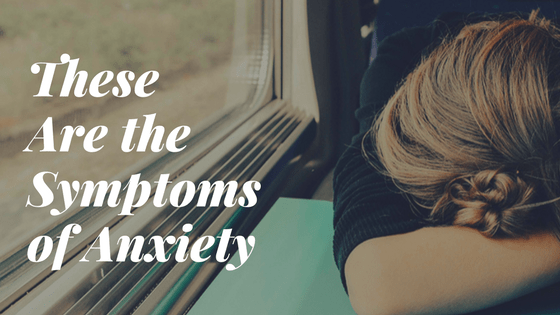Anxiety can manifest in different people different ways.
Some experience anxiety primarily physically, like an upset stomach or racing heart. Others may recognize their anxiety as primarily psychological, like racing thoughts and difficulty concentrating. Regardless of the type of anxiety you experience, all anxiety disorders share the features of excessive fear and anxiety related disturbances. Fear is the real or perceived imminent threat, while anxiety is the anticipation of a future threat. All anxiety disorders induce arousal of the fight-or-flight system, negative thoughts about potential danger, and a desire to escape the potential danger. The following is a list of diagnostic criteria from the Diagnostic and Statistics manual of Mental Disorders, fifth edition (DSM-5) for Generalized Anxiety Disorder. This information is for the purposes of education only. Please see a qualified mental health professional for a full diagnostic evaluation.
DSM-5 diagnostic criteria
 Excessive anxiety and worry (apprehensive expectation), occurring more days than not for at least 6 months, about a number of events or activities (such as work or school performance).
Excessive anxiety and worry (apprehensive expectation), occurring more days than not for at least 6 months, about a number of events or activities (such as work or school performance).- The individual finds it difficult to control the worry.
- The anxiety and worry are associated with three (or more) of the following six symptoms (with at least some symptoms having been present for more days than not for the past 6 months):
Note: only one item is required in children.
a. Restlessness or feeling keyed up or on edge
b. Being easily fatigued
c. Difficulty concentrating or mind going blank.
d. Irritability.
e. Muscle tension.
f. Sleep disturbance (difficulty falling or staying asleep, or restless, unsatisfying sleep) - The anxiety, worry, or physical symptoms cause clinically significant distress or impairment in social, occupational, or other important areas of functioning.
- The disturbance is not attributable to the physiological effects of a substance (e.g. a drug of abuse, a medication) or another medical condition (hyperthyroidism).
- The disturbance is not better explained by another mental disorder (e.g. anxiety or worry about having panic attacks in panic disorder, negative evaluation in social anxiety disorder [social phobia], contamination or other obsessions in obsessive-compulsive disorder, separation from attachment figures in separation anxiety disorder, reminders of traumatic events in posttraumatic stress disorder, gaining weight in anorexia nervosa, physical complaints in somatic symptom disorder, perceived appearance flaws in body dysmorphic disorder, having a serious illness in illness anxiety disorder, or the content of delusional beliefs in schizophrenia or delusional disorder.)”
Is this you?
If reading this you realize ‘this is  me!’ and you identify with most of symptoms of generalized anxiety disorder, give us a call. It is time to seek some help. You don’t have to live with debilitating anxiety.
me!’ and you identify with most of symptoms of generalized anxiety disorder, give us a call. It is time to seek some help. You don’t have to live with debilitating anxiety.


